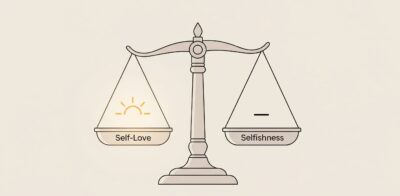Introduction
Ingratiation Techniques offer a pathway to smoother interactions and deeper rapport. Imagine stepping into a meeting and immediately sensing that your words and actions resonate with others—this article unveils the “how” behind that feeling. Through clear steps, real-life narratives, and evidence-based insights, you’ll learn to harness positive ingratiation while guarding against its misuse. Let’s dive into practical strategies that feel authentic and empowering.
Table of contents
1. Ingratiation Techniques Definition and Components
Ingratiation involves deliberate behaviors aimed at making oneself more likable to a target. Psychologists classify its three core components as follows:
Self-Presentation: You highlight your strengths or achievements when they align with the other person’s values or needs.
Opinion Conformity: You genuinely express agreement with the target’s views, demonstrating shared perspectives.
Other-Enhancement: You offer sincere compliments or encouragement to uplift the target’s self-image.
This framework stems from foundational research by Jones & Pittman (1982), who mapped these tactics in organizational settings. Therefore, understanding each component helps you choose the right approach at the right moment (Jones & Pittman, 1982).
2. When Ingratiation Becomes Virtue or Vice
Ingratiation can serve both noble and harmful ends. Recognizing this duality ensures you apply it wisely.
2.1. Enhancing Positive Ingratiation
To cultivate respectful, trust-building ingratiation:
Assess Your Intentions: Therefore, start by clarifying your sincere motive—do you want to uplift, support, or collaborate?
Choose Appropriate Tactics: For instance, employ other-enhancement when someone shares an achievement.
Adapt to Context: However, avoid excessive flattery in high-stakes evaluations; instead, use honest agreement or shared experiences.
Solicit Feedback: Ask close colleagues or friends if your compliments feel authentic.
Sustain Long-Term Only: Continue behavior only when genuine values and respect underpin it.
Following these steps helps you reinforce Ingratiation Techniques as an expression of goodwill rather than manipulation (Bolino et al., 2004).
2.2. Reducing Undesirable Ingratiation
When ingratiation tips into dishonesty or self-serving gain, counteract it by:
Self-Monitoring: Regularly reflect—“Am I flattered by my own words?”
Limit Praise Frequency: Therefore, set a personal guideline: one genuine compliment per interaction maximum.
Diversify Behaviors: Instead of constant agreement, express respectful dissent when appropriate.
Cultivate Authenticity: Focus on building competence so your relationships rest on skills, not just likability.
Seek Accountability: Invite peers to point out if you slip into over-complimenting.
By combining these measures, you diminish the risk of appearing insincere or manipulative (Grouzet et al., 2001).
3. Ingratiation Techniques in Action: Practical Scenarios
Below are four detailed, realistic examples illustrating both positive use and pitfalls. Each unfolds like a brief drama, ensuring clear takeaways.
3.1. Example 1: The New Team Member
Rahim joined a cross-departmental project where senior members valued punctuality above all. Instead of generic praise, he:
- Observed that meetings always start on the hour.
- Arrived five minutes early, then said, “I appreciate how you respect everyone’s time; it sets a professional tone.”
- Followed up by asking a logistical question.
As a result, the team lead invited him to co-present next week—an opportunity Rahim earned through other-enhancement and contextual self-presentation.
3.2. Example 2: The Client Presentation
Maya prepared a pitch for a long-standing client who often stressed environmental responsibility. She:
- Researched their recent sustainability report.
- Opened with, “Your latest green initiative demonstrates true leadership in our industry.”
- Aligned her proposal’s eco-friendly benefits with the client’s goals.
Her opinion conformity and other-enhancement led to contract renewal worth 30% more than last year, illustrating how tailored ingratiation drives concrete business results.
3.3. Example 3: Avoiding the Flattery Trap
Omar worked under a manager known for expecting lavish praise. Initially, he offered daily compliments on trivial matters. Soon, his manager seemed suspicious and less responsive. Omar then:
- Switched to acknowledging only significant achievements.
- Paired honest feedback—“Your data analysis was thorough, though the chart legends could improve clarity.”
- Demonstrated competence in his own tasks without constant flattery.
This balanced approach restored trust and showcased Omar’s emerging leadership.
3.4. Example 4: Peer-to-Peer Collaboration
Aisha collaborated with a peer, Sam, who valued creative brainstorming. She:
- Noted Sam’s unique sketching style.
- Said, “Your diagrams bring ideas to life; they spark new angles for my research.”
- Shared her own draft to invite mutual feedback.
Their partnership thrived through reciprocal other-enhancement and mutual skill showcase, leading to a co-authored article.
4. Common Misconceptions about Ingratiation
Myth: “Ingratiation is always manipulative.” Reality: When grounded in genuine respect and competence, it fosters trust and cooperation.
Myth: “Only extroverts succeed with ingratiation.” Reality: Introverts excel by choosing thoughtful, one-on-one compliments or aligning values in writing.
Myth: “It requires constant effort.” Reality: Quality over quantity matters; strategic, sincere actions resonate more than habitual flattery.
5. Supporting Evidence and Insights
A meta-analysis in the Journal of Applied Psychology found that effective ingratiation correlates with a 20–25% increase in perceived competence and likability (Bolino, 1999).
Research by Jones et al. (2010) indicates that unbalanced flattery reduces credibility by up to 15% over time.
These studies highlight the fine line between authentic rapport-building and self-serving behavior.
Conclusion and Key Takeaways
Ingratiation, when guided by sincerity and ethical boundaries, transforms everyday interactions into opportunities for trust and collaboration. Remember:
- Define Your Motive: Align actions with genuine respect.
- Apply Tactics Selectively: Match self-presentation, opinion conformity, or other-enhancement to the situation.
- Monitor for Overuse: Guard against habitual flattery.
- Learn from Feedback: Adjust based on others’ responses.
Embrace Ingratiation Techniques as a bridge to meaningful connections rather than a shortcut to favor. By doing so, you’ll foster relationships built on authenticity and mutual respect.
References
Warning: The provided links lead only to the specified content. Other areas of those sites may contain material that conflicts with some beliefs or ethics. Please view only the intended page.
- Ingratiation (Wikipedia, 2025) – General overview of ingratiation tactics and research.
https://en.wikipedia.org/wiki/Ingratiation - Bolino, M. C. (1999). “Citizenship and Impression Management: Good Soldiers or Good Actors?” Academy of Management Review, 24(1), 82–98. – Foundational study defining key ingratiation components.
https://doi.org/10.5465/amr.1999.1580442 - Bolino, M. C., Long, D., & Turnley, W. H. (2016). “Impression Management in Organizations: Critical Questions, Answers, and Areas for Future Research.” Annual Review of Organizational Psychology and Organizational Behavior, 3, 377–406. – In-depth review of motives, tactics, and outcomes.
https://doi.org/10.1146/annurev-orgpsych-041015-062337 - Grant, A. M., & Mayer, D. M. (2009). “Good Soldiers and Good Actors: Prosocial and Impression Management Motives as Interactive Predictors of Affiliative Citizenship Behaviors.” Journal of Applied Psychology, 94(4), 900–912. – Empirical tests of prosocial vs. impression-management motives.
https://doi.org/10.1037/a0013770


















